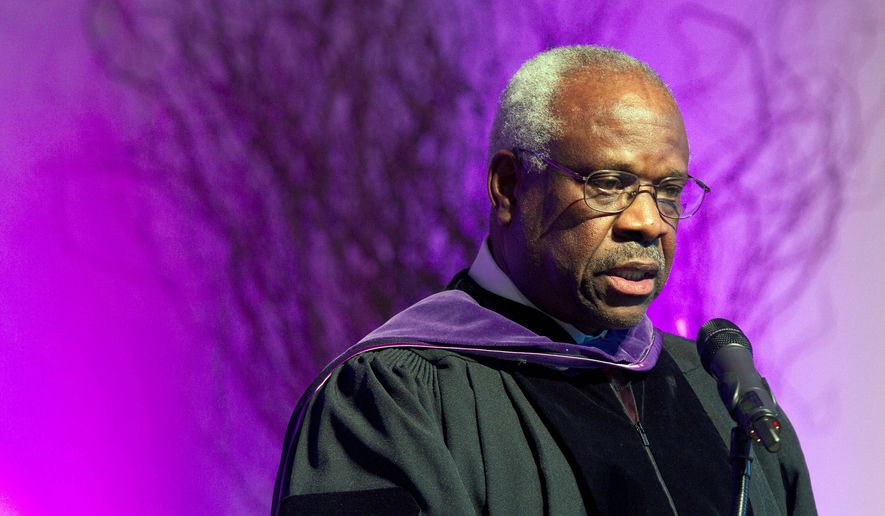A petition is calling on the Smithsonian Institution to rectify the omission of U.S. Supreme Court Justice Clarence Thomas from the recently opened National Museum of African American History and Culture.
More than 15,000 people have signed the StandUnited petition, which tells the director of the museum not to “overlook African American leaders like Justice Clarence Thomas” just because they’re conservative.
“Curators at the museum singled out Thomas due to his unique views on race and his conservative thought that the federal government is the greatest threat to our individual liberties,” the petition reads. “The museum highlights people of less noble endeavors, and it is unfathomable to think the curators were not open-minded enough to include all historically significant African Americans, no matter their political beliefs.”
Angela Mirabito, senior campaign organizer for StandUnited, said the petition is a grass-roots effort started by someone who was outraged by the exclusion of Justice Thomas.
“The petition was started by a petitioner who just saw that there were really prominent black conservatives who were left out of this great new museum here in D.C.,” Ms. Mirabito said. “I talked to her, and she really saw that that museum should be celebrating people who have made fabulous contributions, and Justice Thomas is one of them.”
The petition joins a growing chorus of politicians, pundits and everyday Americans who have condemned the museum, which opened in September, for failing to mention Justice Thomas in any of its inaugural exhibitions.
In December Sen. Ted Cruz of Texas sent a letter to the director of the African-American history museum asking for the life and accomplishments of the influential jurist to be recognized.
“I am concerned that millions of Americans, of all ages, races, religions, and walks of life, when passing through this museum, will be subjected to a singular and distorted view of Justice Thomas, an African-American who survived segregation, defeated discrimination, and ascended all the way to the Supreme Court,” the letter read.
Asked for comment on the petition, Smithsonian spokeswoman Linda St. Thomas referred to the museum’s response to Mr. Cruz.
“While we recognize that we cannot tell every story in the inaugural exhibitions of our newest museum,” it read, “we will continue to host new exhibitions over time as we interpret the African American experience, and we expect that Justice Thomas’s story will be an excellent illustration of one of the themes that exemplify that experience.”
The museum does not mention Justice Thomas, but it does reference Anita Hill, who accused the jurist of sexual harassment during his Senate confirmation hearings. It also includes an exhibit featuring the Black Lives Matter movement.
“The persistent efforts to undermine Justice Thomas and his compelling body of jurisprudence, and to ignore the spectacular Horatio Alger story of his life, are part of a deliberate strategy to silence a conservative voice from someone who might serve as a transformative role model in the African-American community in particular, and the American community more broadly,” John Eastman, founding director of the Claremont Institute’s Center for Constitutional Jurisprudence, told The Washington Times in December.
“Sad, really, that the taxpayer-financed institutions of our own government would join in such efforts,” said Mr. Eastman, a former clerk for Justice Thomas.
• Bradford Richardson can be reached at brichardson@washingtontimes.com.




Please read our comment policy before commenting.